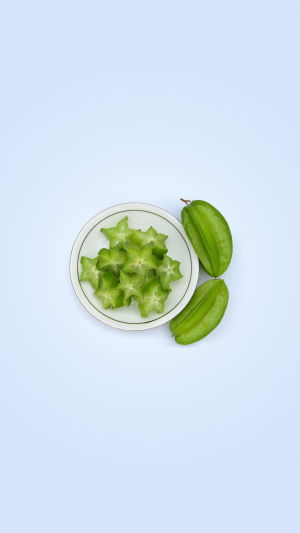Star fruit, also called Averrhoa carambola, is a tropical fruit known for its star-like shape when sliced and its sweet-tart taste.
It comes from Southeast Asia, especially the Malayan islands, and is grown in warm climates worldwide, including India, the Philippines, and parts of the Americas.
<h3>Nutritional Information</h3>
Star fruit is low in calories, making it a great option for people who are health-conscious. A medium-sized star fruit (about 91 grams) has around 28 calories, 6 grams of carbs, and 1 gram of protein. It's rich in fiber, providing about 3 grams per fruit, and is a fantastic source of vitamin C, supplying about 52% of the daily recommended intake. Other important nutrients include vitamin B5, folate, copper, potassium, and magnesium.
Star fruit is also full of antioxidants like quercetin, gallic acid, and epicatechin, which may offer health benefits like reducing inflammation and possibly lowering cholesterol.
5 Health Benefits of Star Fruit
Video by Bajaj Finserv Health
<h3>Health Benefits</h3>
Thanks to its nutrients, star fruit offers several health perks:
• Antioxidant Power: The antioxidants in star fruit can help protect the body from oxidative stress, possibly lowering the risk of chronic diseases.
• Digestive Health: Its high fiber content supports digestion, promotes regular bowel movements, and may help control blood sugar by slowing the absorption of carbs.
• Weight Control: With low calories and high fiber, star fruit can help you feel full for longer, making it a good snack for weight management.
• Heart Health: The potassium in star fruit helps maintain healthy blood pressure, which may reduce the risk of heart disease.
However, star fruit is high in oxalates, which can be dangerous for people with kidney problems. Eating it can lead to serious issues, like kidney damage or neurological problems, in people who are sensitive to it.
<h3>Culinary Uses</h3>
There are many ways to enjoy star fruit:
• Fresh: Eat it as it is or add it to fruit salads for a refreshing taste.
• Cooking: It's used in various dishes, including curries and soups, especially in Southeast Asian cooking.
• Drinks: You can juice it or blend it into smoothies.
• Preservation: Star fruit can be turned into jams, jellies, or chutneys, making it last longer and offering a range of uses.
<h3>Preparation and Storage</h3>
To prepare star fruit, wash it, cut off the ends, and slice it crosswise to make star-shaped pieces. The skin is edible, and you can remove the seeds if you like. A ripe star fruit is mostly yellow with little green. If it develops brown spots, it's overripe and should be eaten soon or thrown away.
Store unripe star fruit at room temperature until it ripens, then refrigerate for a few days to preserve its freshness. For the best flavor and nutrition, enjoy it while it's still fresh.
Star fruit is a delicious and healthy tropical fruit that adds flavor to many dishes while offering several health benefits. However, people with kidney issues should be careful and talk to a doctor before eating it. For most, star fruit is a tasty and nutritious addition to a balanced diet.





